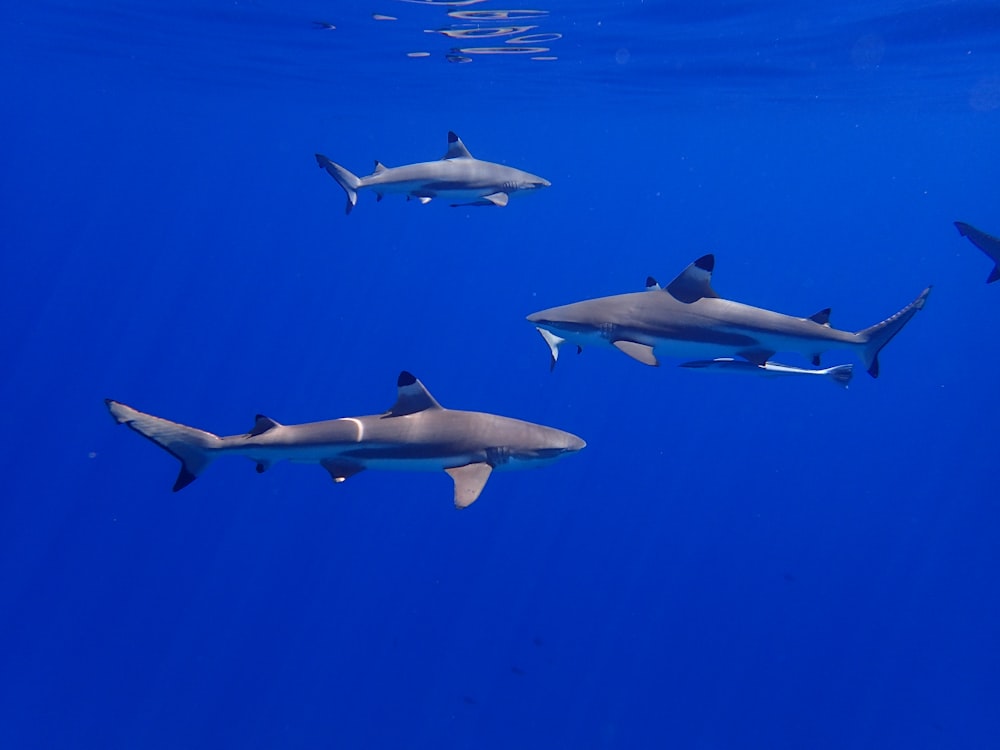Did you know that the world’s oceans are home to a diverse array of shark species?
From the iconic Great White to the elusive Goblin shark, these fascinating creatures play a vital role in marine ecosystems.
In our upcoming article, we’ll delve into the question on many minds: how many sharks are there in the world’s oceans?
As we explore the depths of this topic, we’ll uncover the latest research and insights on shark populations worldwide.
Join us as we navigate the waters of shark conservation, habitat protection, and the importance of these apex predators in maintaining the balance of our oceans.
Stay tuned to discover the awe-inspiring world of sharks and the crucial role they play in our planet’s biodiversity.
Global Shark Populations: An Overview
The Significance of Tracking Shark Numbers
Tracking shark populations is vital for understanding the health of marine ecosystems.
Monitoring the number of sharks in the world’s oceans can assess the impact of human activities such as overfishing and habitat destruction.
This data helps scientists and conservationists make informed decisions to protect shark species and ensure the balance of marine life.
Challenges in Estimating Shark Populations
Estimating shark populations poses significant challenges due to the vastness of the oceans and the elusive nature of many shark species.
Factors such as migration patterns, deep-sea habitats, and limited research funding contribute to the difficulty in obtaining accurate population numbers.
Despite these challenges, ongoing research efforts aim to improve methodologies and technologies for better monitoring and conservation of shark populations.
The Impact of Human Activities on Sharks
Overfishing and Its Consequences
Overfishing is a significant threat to shark populations worldwide.
Commercial fishing practices often target sharks for their fins, meat, and other valuable parts, leading to a drastic decline in their numbers.
The demand for shark products, such as shark fin soup, drives this unsustainable exploitation.
As a result, many shark species are now considered vulnerable, endangered, or critically endangered according to the IUCN Red List.
Habitat Destruction and Pollution
Human activities like coastal development, pollution, and climate change have a detrimental impact on shark habitats.
Destruction of coral reefs, mangroves, and other essential marine ecosystems deprives sharks of their breeding and feeding grounds.
Pollution from industrial waste, plastic debris, and chemicals contaminates the waters where sharks reside, impacting their health and reproductive success.
Climate change influences ocean temperature and acidity, further disrupting shark habitats and food sources.
Conservation Efforts: A Beacon of Hope
Protected Areas and Marine Sanctuaries
Preserving vital habitats through the establishment of protected areas and marine sanctuaries is a crucial aspect of shark conservation.
These designated zones not only safeguard essential breeding and feeding grounds for sharks but also promote biodiversity and support the overall health of marine ecosystems.
Minimizing human disturbances and activities such as fishing in these areas, can help ensure the survival and thriving of shark populations.
Success Stories in Shark Conservation
In recent years, there have been notable success stories in shark conservation that demonstrate the positive impact of targeted conservation efforts.
For instance, the recovery of certain shark populations in protected areas has shown promising results, signaling the effectiveness of conservation measures.
Collaborative initiatives between governments, conservation organizations, scientists, and local communities have played a significant role in these achievements, underscoring the importance of collective action in safeguarding shark species.
Such success stories serve as beacons of hope and inspiration for ongoing conservation endeavors worldwide.
Utilizing Technology to Monitor “How Many Sharks”
Tagging and Satellite Tracking
In tracking “how many sharks” exist in our oceans, we rely heavily on advanced technology.
Tagging and satellite tracking systems play a crucial role in monitoring shark populations.
Scientists attach tags to sharks, allowing them to track their movements in real time.
These tags provide valuable data on migration patterns, behavior, and population dynamics.
Satellite tracking enables researchers to gather information on sharks’ long-distance movements across vast oceanic territories.
Citizen Science and Public Engagement
Engaging the public in shark monitoring efforts through citizen science initiatives is another effective approach.
Citizen science involves ordinary individuals collecting data and contributing to scientific research.
Empowering volunteers to report shark sightings, can help researchers gather valuable information on shark presence in different regions.
Public engagement not only enhances data collection but also raises awareness about shark conservation among communities.
The Future of Sharks: Predictions and Concerns
As we wrap up our discussion on the world of sharks, it’s evident that these majestic creatures face numerous challenges in the modern era.
Our efforts in shark conservation are crucial to ensuring the survival of these vital species.
Technology plays a pivotal role in monitoring and protecting shark populations, offering hope for a brighter future.
Citizen science initiatives empower individuals to contribute actively to shark research and conservation.
Together, we can make a difference in safeguarding the oceans and the diverse ecosystems that sharks call home.
Let’s continue our commitment to preserving these incredible animals for generations to come.
Frequently Asked Questions About Sharks Population
1. What is the main focus of the article?
The article explores the diversity of shark species, emphasizes the significance of shark conservation, and addresses challenges in estimating shark populations due to human activities.
2. What are some of the detrimental effects of human activities on sharks?
Human activities like overfishing, habitat destruction, and pollution negatively impact shark populations, leading to a decline in their numbers.
3. How are conservation efforts highlighted in the article?
The article showcases conservation initiatives such as establishing protected areas and marine sanctuaries to safeguard shark habitats and promote their recovery.
4. What technologies are mentioned for monitoring shark populations?
Technologies like tagging and satellite tracking are discussed as valuable tools for accurately monitoring shark populations and understanding their movements.
5. How can the public get involved in shark conservation?
Citizen science initiatives engage the public in shark monitoring efforts, enabling them to contribute valuable data and raise awareness about the importance of shark conservation.
